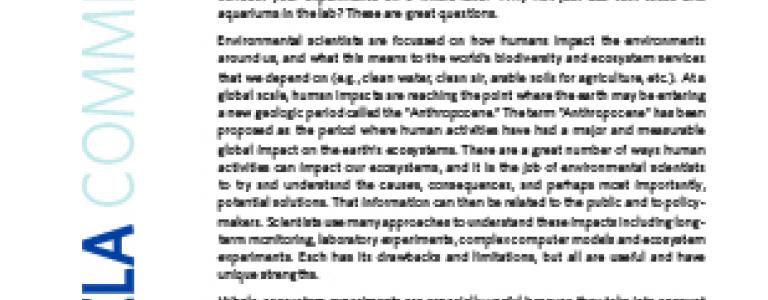The Need for Whole-ecosystem Experiments
Why do you need to conduct experiments on a whole lake? Why not just use test tubes and aquariums in the lab?
IISD-ELA Research Scientist Scott Higgins answers these questions and explains the concept of whole-ecosystem research.
Whole-ecosystem experiments are especially useful because they take into account the vast complexity of interactions between the natural environment and the large numbers of species present in most ecosystems. Experiments done in the laboratory are very useful, but often do not scale well to the ecosystem level because they frequently include only one or a few species that one might find in nature.
You might also be interested in
What to Expect at Plastics INC-5
Q and A with Tallash Kantai of Earth Negotiations Bulletin on INC-5.
The Chemical Analysis of Fresh Water (Third Edition)
This publication describes the protocols used in the IISD Experimental Lakes Area Analytical Service Laboratory for the measurement of chemical constituents in freshwater samples.
IISD Annual Report 2023–2024
While IISD's reputation as a convenor, a trusted thought leader, and a go-to source on key issues within the sustainable development field is stronger than ever, the work happening outside the spotlight is just as valuable.
We all have to keep plastics out of our lakes and rivers
In an opinion piece, IISD-ELA's Pauline Gerrard writes that researchers in Toronto found an average of 123 microplastics in one serving of freshwater fish, vastly more than the nine microplastics ingested in a serving of grocery store Alaska pollock found in a study by the same authors published earlier this year.
